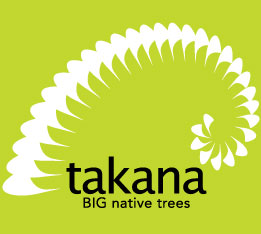Tree selection & cultivation
How do I know which native trees I want?
First look at the data in the Tab “Find Your Tree”, then click on the name of the tree, or click on ‘View All Trees’ and you will get more data plus photos–trees suitable for every situation NZ can offer.
Are natives slow?
Of course some are slow, but most of them are strong growers, and some are fast by any standards. so don’t be under the illusion that natives take forever to make a show. BUT, plant a native and you could be responsible for a living thing that will last for a thousand years. Imagine that!
Do natives transplant well, especially at bigger stages?
Yes they do. There are several big tree nurseries like us which supply natives. Our replant experience is overwhelmingly successful, takana guarantee to supply you beautiful trees as ordered, in peak condition and to your satisfaction, every time.
Why are the names so hard?
We agree, but a bit hard to pinpoint the answer. takana uses Maori names wherever we can establish the correct Maori word. We don’t use the old (cringeworthy) English names like Celery Pine, Whiteywood and others we should not even quote in a family website. But the Maori names are not used nationwide, so there can be confusion. The trade relies on the Botanical names, which are of course long and latin, and even these keep changing as new requests are accepted by the powers that be. Some like Tawapou (Planchonella costata) have two latin names in common use. Some have no Maori name, mostly the rarer species, so we either choose a part of the latin name, like Baylisiana (Pennantia baylisiana) or Elingamita (Elingamita johnsonii), or the English name like Coastal Maire (Nestegis apetala) or Silver Pine (Manoao colensoi).
Why do you wish to stock so many trees?
Surely some are too rare to be commercial? Yes, but we are helping to preserve some threatened species, and though those are usually the slow growing ones, they are beautiful and will have a place if we can just showcase them to our customers. 4 of our trees were saved by scientists who discovered one single example
How do you move your field trees when you sell them?
We dig them out of our beautiful soft peat soil with our Terrasaws (like a chain saw), with big 1m square at top rootballs, about 800mm deep in a wedge, lift them with our machinery then wrap them in hessian or shrink wrap, and load them on to a Hiab or other transport. On arrival the hiab, or your own equipment lifts them to be placed directly into the hole, with the wrap holding the root ball together while the tree settles into its new home. We have a very high success rate, with a relatively low cost system.


